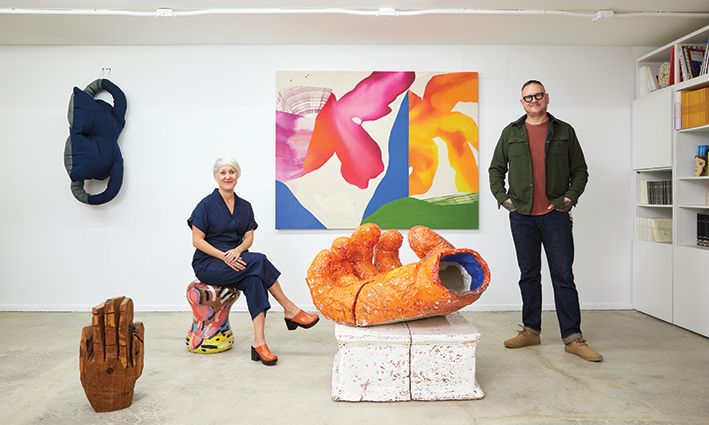Devon Oder and Adam Miller want their gallery to be “surrounded by artists” Photo: Ye Rin Mok
Does Los Angeles need another gallery in Hollywood? The Pit founders Devon Oder and Adam D. Miller certainly don’t think so. “We’re in Glendale, we’ve been here for 11 years, and we haven’t needed to be in Hollywood or in a sort of ‘hub’ to make it work,” says Oder. Instead, on 24 February the artist-run gallery opened a 13,000 sq. ft space in Atwater Village, a section of Los Angeles not known for its contemporary art scene.
The Pit is testing the waters in the Eastside neighbourhood. “We wanted to be true to what feels like the vibe of The Pit, which is we’re more interested in being set up in a place that’s surrounded by artists than that’s surrounded by rich people,” Miller says. The two inaugural shows in the new locale reflect this attitude: the group exhibition Halfway to Sanity includes more than 50 artists the gallery has worked with; while Paul McCarthy and Benjamin Weissman (both until 6 April) features longtime friends of Oder and Miller. (Weissman was the pair’s professor at ArtCenter College of Design in Pasadena.)
The gallery’s founders—who are partners in life, family and business, and first met while working for the Los Angeles artist Sterling Ruby—faced scepticism when they started enquiring about available spaces in Atwater Village. But the move is not completely unique: the ultra-cool Marta gallery and Philip Martin Gallery are moving in soon, too (as will be a major design outfit, though that news has yet to be announced). The Pit’s former set-staging warehouse now houses 8,000 sq. ft of exhibition space, a significant studio space for Miller’s own artistic practice, offices, private viewing rooms and a retail shop.
The gallery has grown into a formidable operation that includes an artist roster of nearly 30, a growing team of eight employees, a secondary space in Palm Springs and participation in more than a half-dozen fairs annually. “What has set us apart for the past ten years is we are always going to try to think outside the box,” Miller says.
“We’ve been thinking about how to expand for a really long time. Some of our colleagues expanded the footprint of the physical spaces prior to their artists, relationships and roster. We went the opposite route.”

